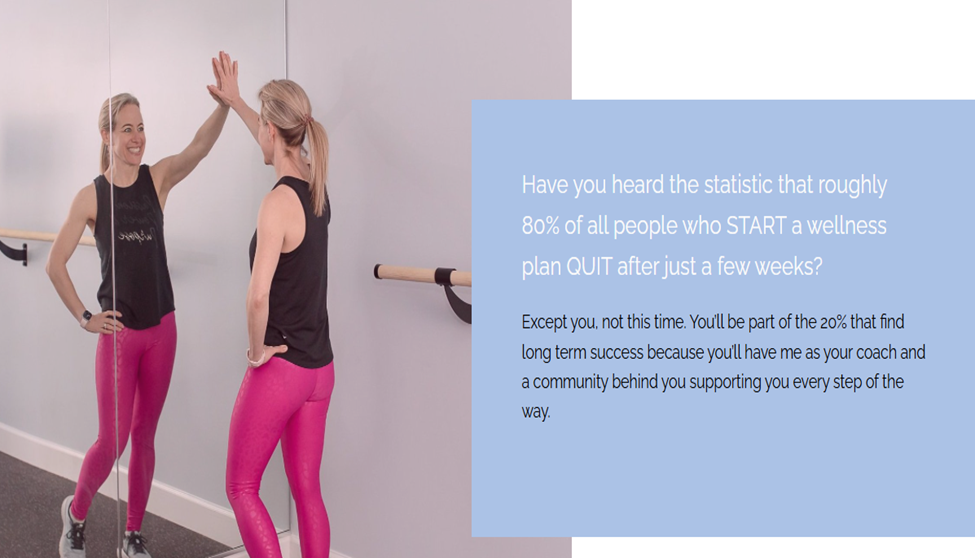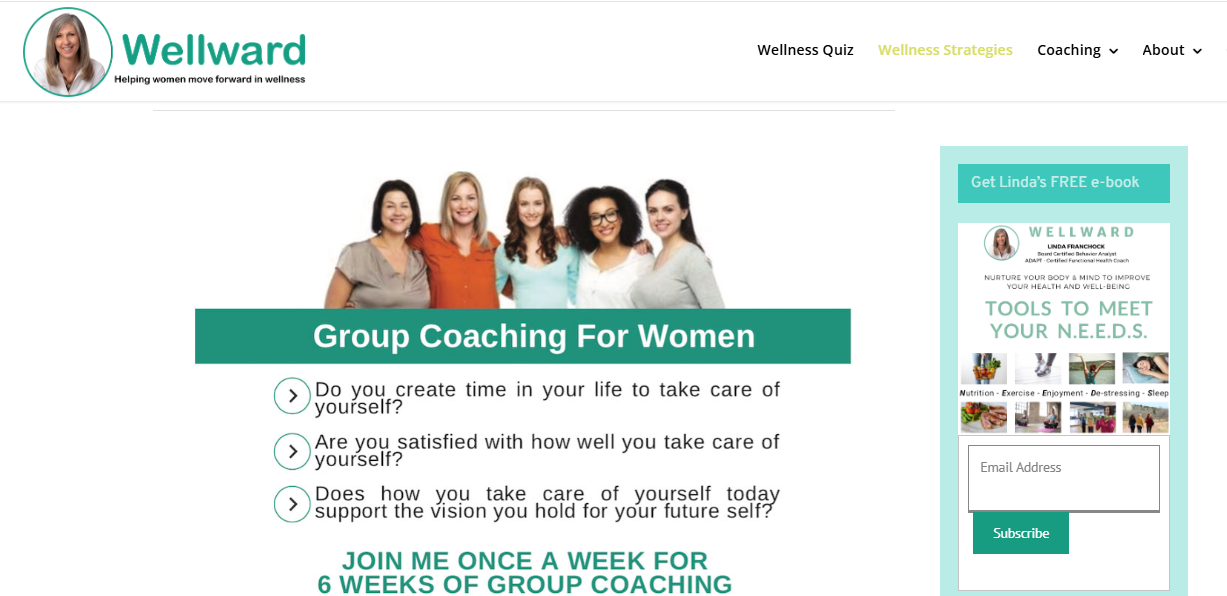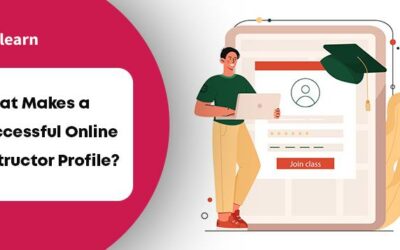How to Structure a Group Coaching Program
Planning to start a group coaching program to scale your business? A group coaching program is an excellent way to expand your income potential, as you can handle multiple clients simultaneously. That’s exactly how to make more impact with less effort!
Running a group coaching program is also beneficial for clients. From encouraging peer experiences to affordable pricing, group coaching has several advantages.
Now, let’s delve into the benefits, coaching models, and effective practices on how to structure a group coaching program.
So, get ready to create an empowering group coaching program!
What is a Group Coaching Program?
Group coaching involves working with multiple people simultaneously to achieve common goals. While 1: 1 coaching sessions focus on offering support through individual sessions, group coaching targets shared peer experiences and mutual support.
In private coaching sessions, the coach offers one-to-one attention to individuals to achieve a specific goal. In group coaching, all the members of the group attend the same coaching call and try to derive value from it.
What are the Benefits of a Group Coaching Program?
Before we discuss the detailed steps to structuring a group coaching program, let’s explore its advantages.
A well-run group coaching program accelerates and leaves a positive impact on your coaching business with:
High Income
With individual coaching, you can only coach a limited number of clients at a time. Group coaching helps you service multiple clients simultaneously, which means you can earn more for the same amount of effort.
Scalable
A group coaching session maximizes your time and earning potential as you work with multiple clients. Moreover, you can reach a larger client base with the same resources. A group coaching session typically accommodates around 10-20 clients.
Cost-Effective
Group coaching programs typically sell at a lower cost than individual coaching programs. The program cost is shared by multiple participants who take up the coaching program.
Encourages Different Perspectives
Group coaching facilitates the power of peer learning. In group dynamics, clients are motivated by peer learning experiences, perspectives, collaborative problem-solving, and the coach’s input.
Accountability
Achieving goals can become challenging, and you need some sort of motivation to break through. Peers can provide valuable feedback and encouragement to overcome challenges and improve your performance over time.
Consistent Structure and Repetition
Group coaching programs typically include a fixed curriculum delivered during scheduled group sessions. The result? Your business gains momentum and drives continuous progress for the entire team towards common group objectives.
Team-Building & Networking Opportunities
A collaborative stride towards a common goal builds a sense of community. Group coaching fosters a collaborative learning environment where peers can offer constructive feedback and support each other. Plus, the icebreaker activities are fun and engaging and forge meaningful connections. Thus, the unparalleled network extends beyond coaching sessions!
How to Structure a Group Coaching Program: 7-Step Guide
Let’s navigate through the steps on how to structure a group coaching program:
Step 1: Define Your Outcome
The first step is to define the final expectations of your group coaching program. What kind of transformation would your clients achieve from your group coaching? What are the specific and measurable metrics that you would like to measure?
Focus and direction are all the more essential in group coaching because multiple participants are involved. So, you need to find a shared focus or goal. Ideally, that’s why they joined the coaching session in the first place.
You can set a separate goal for every session in addition to the shared goal. Make sure you communicate your plan with your participants to help them achieve their expected progress. This will increase accountability and engagement and achieve better results. Then, crafting an action plan will become easier.
For example,

Lisa Klein offers accountability group coaching to improve overall mental well-being. This includes nutritional plans and exercise routines.
An excellent way to establish goals for your group coaching session is to take intake forms that include the client’s goals, expectations, and other related information.
Step 2: Identify Your Ideal Client
Now that you have defined your coaching goals, you should next define who can benefit most from your group coaching offer. This is rightly your ideal client!
Discovering your ideal client helps to refine and market your coaching packages better! You can include the strategies and techniques that address their pain points. Besides, when you know the social media platforms clients ideally hang out with, you can easily find the right clients.
Here’s a set of questions for finding your ideal coaching clients:
- Who are your ideal clients? What’s their age, and where do they belong?
- Are you interested in finding clients enduring a specific challenge or problem?
- What kind of clients do you enjoy working with? Which clients achieved the best results from your coaching program?
- What are their core beliefs and values?
- What are the pain points and desires of your ideal clients?
- Are you confident enough that your ideal clients will pay you well?
Interview 10-20 people and create a detailed persona covering the demographics, psychographics, pain points, challenges, etc.
Step 3: Choose Your Group Coaching Model
Group coaching is starkly different from 1:1 coaching. For instance, one-on-one coaching lacks individualized attention and support. On the other hand, it scores points in several other arenas: two-way feedback, affordability, problem-solving, etc. This makes choosing a coaching model all the more important.
Now, let’s take a look at some popular coaching models:
Cohort Based
Imagine a virtual classroom packed with students who start and complete the course at the same time. That’s what rightly defines a cohort-based group coaching model! It simulates a traditional classroom experience, where the coach leads the cohort towards a common outcome or objective.
So, the participants experience all the phases of group coaching together. It provides a consistent schedule and means to earn income. Start with defining an outcome for your cohort program. The compelling “why” builds momentum towards the expected outcome. Next, create a framework to organize the deliverables.
For example, a six-week leadership cohort-based program for women to develop core leadership skills could include assessments, workshops, activities, small-scale projects, and networking opportunities.
Pros
- Peer-to-peer support and increased engagement
- A fixed schedule and coaching curriculum
- Networking opportunities
- Diverse learning perspectives by individuals from different backgrounds
- Strong community building and collaborative learning
Cons
- Lack of flexibility due to fixed schedules and predefined pace of the program
- Limited individual support and attention due to large group
- Learners might struggle with peer pressure
- Uniform pace for all that won’t support individual learners
- Challenging to meet diverse learning needs
Membership Model
Next, let’s discuss the membership model. This is essentially an academy where participants get access to diverse courses, live events, and community access. You pay a fixed fee to join the membership and access the “evergreen content.”
Members sign up for the program and progress at their own pace without a start or end date.
There might be clients with different outcomes accessing the same membership program. Memberships are perfect if you need a more recurring income, given there is no set duration.
💡Tip: Here’s our detailed guide on how to sell memberships online
Pros
- Flexibility to continue self-paced learning.
- Earn a recurring income as the program continues for a longer time
- Cater to clients with different outcomes and thus broaden your reach
- The community-building aspect motivates and brings shared responsibility
Cons
Why Transition to Virtual Dance School?
- Requires consistent content creation and engagement
- Potentially higher member churn-out
- Difficult to cater to different outcomes and customer expectations
- Low-cost and highly scalable
Standard Program
The standard program model is a great approach to combining the best of both worlds. The program approach doesn’t have a designated start time but runs for a fixed time. So, you’ll have to handle memberships starting and ending at different times.
This coaching model is for clients with more specific learning outcomes who need a practical approach. A library of resources, such as pre-recorded courses, worksheets and checklists, is available online. The program ends with a live session to clear any existing doubts. However, this model demands more effort from the course creator to add value at each step.
Pros
- Offers flexibility to learners to complete the program at their own convenience
- Scalable model, and you can
Cons
- Difficult to manage as the memberships continue for different times
- Higher drop-off rates than cohort programs
- Requires constant content updates to stay relevant to audience
Step 4: Define the Program Length, Format & Session Structure
Once you decide on your coaching model, you must also decide how to implement the systems. Unlike one-to-one coaching programs, you cannot tweak your coaching plan based on your client’s goals and expectations.
For group coaching programs, you need to essentially define the structure of your group coaching program preemptively. Also, you’re tracking your clients’ progress weekly, so you can create an actionable plan that brings them closer to their outcome.
Define the length of your group coaching program. Are you planning to offer a comprehensive program with everything needed to achieve your outcome or a small coaching program for a specific result? For instance, you can create a four-week program for building confidence or a six-month group coaching program for developing core leadership skills.
Decide the number of people you wish to accommodate in your program. Is it going to be an intimate group with just 5-10 clients? With experience, you can scale your calls to accommodate hundreds of participants with the same outcome.
You can schedule coaching sessions weekly or bi-weekly, along with community support and pre-recorded resources. Your sessions could be 60 minutes to 90 minutes long. Finally, don’t miss the exclusive perks for inviting new members!
Pro Tip: Decide the length of your program based on the size of your outcome or the kind of transformation you want to achieve.
Step 5: Create Your Program Curriculum
You have your outcome and framework for your group coaching program. Now, you need to create the pathway for your transformation! Designing your program content is a crucial step in how to structure a group coaching program guide.
If designing a curriculum seems overwhelming, apply reverse engineering. Start from the outcome and see what your clients need to achieve it. List the five main things your clients are struggling with.
Next, you can address each of them in every session. Remember not to overload your clients with information; craft a roadmap for the transformation!
Include diverse content formats such as:
- Pre-recorded videos
- Courses
- How-to-guides
- Templates
- Worksheets and Exercises
- Checklists
- Planners and Calendars
- And supporting materials like ebooks, research papers, blogs, newsletters, podcasts, TED talks for achieving the outcome
If your content is quite extensive, you can create separate coaching programs and upsell them with your signature package.
Session Structure
Creating session outlines is essential for group coaching programs. A well-structured, meaningful, and relevant session plan is required to face a curious bunch of minds and await a transformation.
Breakdown each session into three sections:
Starting of the Session
Welcoming all the participants who joined the session. A quick recap of the initial session. If it’s your first session, introduce yourself along with your past experience and educational background. Include icebreaker activities to create a collaborative learning environment. Explain to them what the current session is all about.
Actual Session
Here’s where the magic happens! If you have a session topic in hand, include strategies, role-play scenarios, activities, and worksheets to help your clients overcome obstacles.
End of the Session
Keep aside the last few minutes for feedback and reviews. You could ask clients about your coaching style, the most useful part of the session and your areas of improvement. You could also discuss the in-session activities.
Step 6: Setting Up Your Group & Actual Delivery
You have done your groundwork; now it’s time to deliver what you have! Since you’re delivering an online program, you need some tech!
Here’s a perfect set-up for delivering a power-packed group coaching experience:
- Video Conferencing Platform
Robust video conferencing tools like Zoom, Google Meet, and Microsoft Teams
- Scheduling Tool
Calendly or Acuity Scheduling is used to manage your appointments and auto-syncing your booking with the calendar.
- Content Delivery
Platforms for creating, managing, hosting and recording your live calls and learning resources. Leverage all-in-one platforms like Kajabi, Teachable, Thinkific, etc. Use Notion and Google Drive to share additional resources like worksheets, templates, etc.
- Communication
Slack Channels, Facebook groups, Discord or Circle are great for creating an engaging community.
- Payment
Stripe or PayPal for convenient and seamless payment transactions
- Additional Tools & Marketing
Individual assessments track individual progress, and group assessments document the entire group’s progress. Trello is a great tool for organizing your tasks and creating content. Marketing tools like Mailchimp, Send Grid, and Google Analytics for building your brand.
Now, combine everything for an amazing group coaching experience!
Step 7: Measure and Evaluate Your Coaching Program
Your job doesn’t end with delivering your coaching program; you need to evaluate its effectiveness. The first step in determining whether clients find value in your program is to track their progress.
Measure the client’s performance against the coaching goals we defined in the first step. If you can tick most of the boxes, this means your coaching program is actually working. Find what’s working and what’s not, and tweak it in your coaching program.
Testimonials and reviews are real eye-openers. Gather feedback from existing clients to enhance your coaching program!
Best Practices for Effective Group Coaching Sessions
Here are some powerful tips for delivering effective group coaching sessions:
1. Host Live Weekly Calls
Schedule at least one live check-in call a week to keep your clients engaged and stop them from dropping off.
2. Include Simple Exercises In-Between Sessions
Reinforce what you have learned with simple exercises or worksheets between the sessions. Further, a small group chat can help you if you’re stuck in between sessions.
3. You are the Leader
Be energetic and enthusiastic during the sessions. Your energy is infectious. Take 10 minutes before a session to realign your energy. If you don’t show excitement, your clients will mirror the same thing. Remind yourself why you are delivering the group coaching and how you can deliver maximum value to your clients.
4. Create a Consistent Schedule
Your clients are seeking consistency in the structure of your group coaching sessions. Make sure you deliver your sessions at a specific time and a fixed number of days and follow a fixed session schedule. For example, you could start sessions with gratitude or meditation exercises.
5. Simplicity is the Key
Group coaching involves people with different goals, perspectives, expectations, or beliefs. Adopt a less is more approach. Include simple questions and action plans, and be adaptable and open-minded enough to your clients.
6. Reinforce Accountability Mechanism
Encourage peer feedback, open sharing, and regular check-ins to create accountability in your coaching sessions. This will create shared responsibility and a supportive environment, leading to better outcomes.
For detailed insights on how to structure a group coaching program, watch this informative video:
Examples of Group Coaching Programs
Need some inspiration for designing your group coaching program? Here are some interesting examples for your group coaching programs:
Marry Morrissey’s DreamBuilder Coaching Program
With over four decades of experience, Mary Morrissey is a visionary life and personal development expert who guides people to build their dream lives. She is a best-selling author, international speaker, and founder of The Brave Thinking Institute. Morrissey’s DreamBuilder Coaching Program is a 12-week transformative group coaching program that has helped tens of thousands of people worldwide.
The program covers vision building, mindset and belief, and universal laws. It offers actionable strategies for achieving personal and professional growth. The program offers weekly coaching calls, worksheets, guided exercises and online resources. Plus, experience live transformational events, group coaching calls, and access to a private Facebook group.

Linda Franchock’s Wellward Coaching Program
Wellward is a six-week group coaching program for women that empowers them to cultivate self-care. Linda Franchock is a board-certified behaviour analyst and ADAPT-certified health coach with over 20 years of experience in the field. She uses her personalized N.E.E.D.S (Nutrition, Exercise, Enjoyment, De-Stressing, Sleep)approach to direct her clients towards wellness.
Wellward is Franchock’s wellness coaching program. It focuses on developing self-awareness, courage, and confidence and on taking better care of yourself. The program guides you in creating your personalized self-care plan. It includes activities, resources, and coaching calls to develop your self-care vision. Plus, the program includes two private one-to-one coaching sessions for your personalized self-care plan.

Wellward Coaching Program is a 6-week program that guides women to create their personalized self-care plan
Group Coaching Program Template
Let’s take a look at an actual group coaching program with this 6-week leadership coaching template!
Business Group Coaching Program Template
| Topic | Session Plan |
| Week 1: Leadership Foundation & Self-Assessment | Assessment & exercises to understand leadership style, emotional intelligence assessment |
| Week 2: Goal Setting | Set personal & profession goals as per your leadership vision & skills |
| Week 3: Communication Skills | Importance of effective communication, exploring different communication style, exercises & role-playing scenarios for improving active listening & speaking skills |
| Week 4: Emotional Intelligence | Strategies to identify triggers and managing emotions, fostering emotional connect with teams, adapting to communication style, self-reflection and experiential exercises |
| Week 5: Decision-making & Critical Thinking | Self-awareness; Exercises to inculcate logical reasoning; how different viewpoints, timing, and priorities affect decisions, developing emotional intelligence |
| Week 6: Team-Building & Conflict Resolution | Team motivation, engagement, delegation and accountability, activities to enhance team-bonding |
| Final Session: Evaluation & Continuous Growth | Reflection & reviewing progress, assessing growth roadmap, and 360-degree feedback sessions |
Final Thoughts
Group coaching is a great way to maximize your coaching income. Running a group coaching program has several benefits, including accountability, peer-to-peer learning, team-building and networking. Most importantly, you need to define a clear outcome and use simple strategies and questions so all the participants can connect with your coaching program.
Choose the right coaching model based on your coaching style and target audience. We have covered the best coaching models and a detailed guide on how to structure a group coaching program.
There is no golden rule book for creating your group coaching program. All your clients are concerned about is whether you are able to deliver the transformation! So, don’t fear to test different coaching approaches and find the one that works best! We hope you have found value in our valuable insights!
FAQ-Related to How to Structure a Group Coaching Program
1. How to structure a group coaching session?
Here are the steps to structure your group coaching program:
Step # 1: Define your Group Coaching Program Objective
Step # 2: Identify Your Ideal Client
Step # 3: Choose Your Group Coaching Model
Step # 4: Define the Program Length, Format and Session Structure
Step # 5: Create Your Coaching Program Curriculum
Step # 6: Delivering your Coaching Program
Step # 7: Follow-Up
2. How long should the group coaching sessions be?
Ideally, the group coaching programs should last from a few minutes to one hour. Start with an initial assessment, move on to strategies and interactive exercises and end with feedback sessions from peers or the coach.
3. How to price group coaching sessions?
Price your coaching session based on your coaching experience, demand, outcome, and target audience. A high-quality coaching program with a well-defined outcome could be priced in a higher range. If your one-to-one coaching program is priced at $2,000 for 8 sessions, you could price your group sessions around $800 – $1200 per person.





